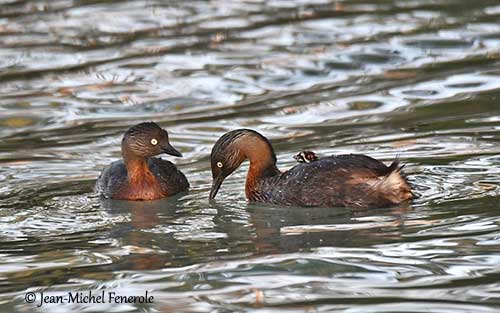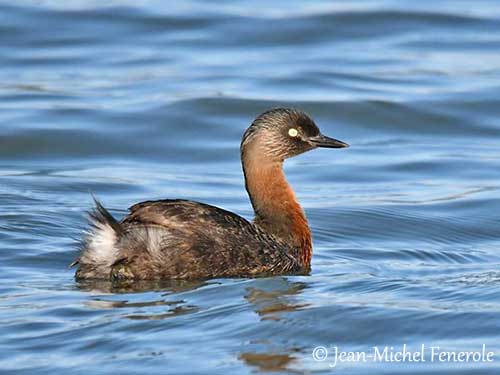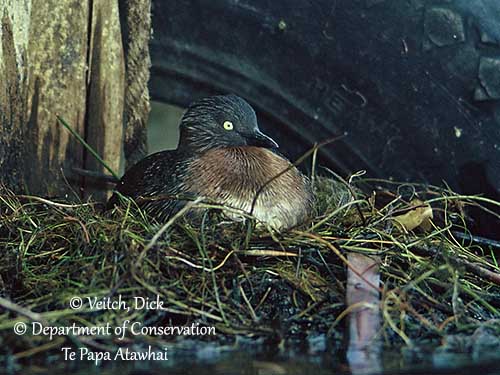
Fr: Grèbe de Nouvelle-Zélande
Maori: Weweia
Ang: New Zealand Grebe - New Zealand Dabchick
All: Maoritaucher
Esp: Zampullín Maorí
Ita: Svasso della Nuova Zelanda
Nd: Nieuw-Zeelandse Fuut
Sd: Maoridopping
Photographers:
Veitch, Dick
Courtesy of Department of Conservation Te Papa Atawhai
Department of Conservation
John Anderson
John Anderson Photo Galleries
Jean Michel Fenerole
Photos d’Oiseaux du monde
Text by Nicole Bouglouan
Sources:
HANDBOOK OF THE BIRDS OF THE WORLD vol 1 by Josep del Hoyo-Andrew Elliot-Jordi Sargatal - Lynx Edicions - ISBN: 8487334105
KNOW YOUR NEW ZEALAND BIRDS by Lynnette Moon - New Holland Publishers – ISBN: 1869660897
BirdLife International (BirdLife International)
New Zealand bird status between 2008 and 2012
New Zealand birds and birding (Narena Olliver)
Te Ara – The Encyclopedia of New Zealand
Family Podicipedidae
Summary cards
New Zealand Grebe or New Zealand Dabchick
Poliocephalus rufopectus
Podicipediformes Order – Podicipedidae Family
INTRODUCTION:
The New Zealand Grebe or Weweia (Maori name) is endemic to New Zealand. Formerly present on North and South Islands, this species is now found only in the North Island where it frequents lakes and lagoons.
These birds are entirely aquatic and their morphology is perfectly adapted to their lives on the water. They are shy and secretive birds.
DESCRIPTION OF THE BIRD:
Biometrics:
Length: 28-30 cm
Weight: 230-270 g
The adult has dark plumage, mostly brownish-black on the upperside. On the wings, we can see a white panel at bases of flight-feathers, conspicuous in flight. The small tail is a tuft of black, short, silky feathers.
The underparts are dusky to silvery-white, but breast and foreneck show chestnut tinge.
The dark glossy head is finely streaked with silvery, long, narrow feathers on crown sides to the nape and on the cheeks.
The black bill is short and pointed. The eyes are pale yellow. Legs and feet are dark grey. It has lobe-webbed feet, set well back on its body. The flattened toes are bordered with a web of skin, making the bird very efficient when swimming, but very clumsy while walking on the ground.

The adults are paler and duller in non-breeding plumage. Both sexes are similar in plumage, but the male is slightly larger than the female, and it has longer bill.
The juvenile has striped head and upperneck and mostly white throat, whereas the upperparts are like in adults. The young bird has pale grey eyes and fleshy pale grey bill with some black markings.
RANGE:
The New Zealand Grebe is patchily distributed in the North Island from Northland to Wairarapa. It can be seen on lakes and ponds on the volcanic plateau, Rotorua Lakes area, Northland, Hawke’s Bay and Wairarapa.
HABITAT:
The New Zealand Grebe prefers clear water and freshwater lakes and ponds. It is often found on sheltered lakes with banks fringed by thick aquatic vegetation. This species occurs from sea-level up to 740 metres of elevation.
CALLS AND SONGS:
The New Zealand Grebe is more vocal during the breeding season. The adults give short chattering calls. When alarmed, it produces rasping sounds and low notes. We can also hear a shrill “wee-ee-ee” whistling sound only audible at close range.
BEHAVIOUR IN THE WILD:
The New Zealand Grebe spends most of its life on or under water, as for feeding or for nesting.
It frequently dives while searching for preys, and often disappears from sight. It appears again several metres away, up to 50 metres sometimes.
It feeds primarily on aquatic insects and their larvae. It pecks them from the surface or catches them from the air. It dives for small fish and crustaceans, remaining under water for up to 30 seconds, in average 10 to 25 seconds. It dives and swims very well thanks to its specialized feet.
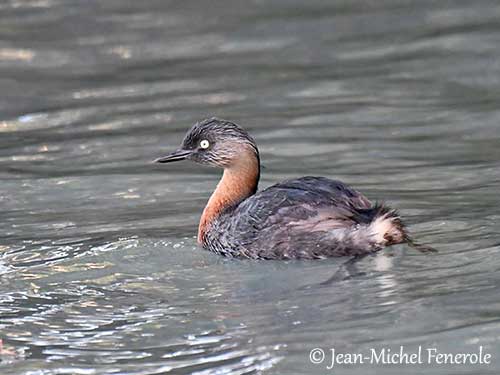
Title: New Zealand Dabchick
Photographer: Veitch, Dick
Date: 1965
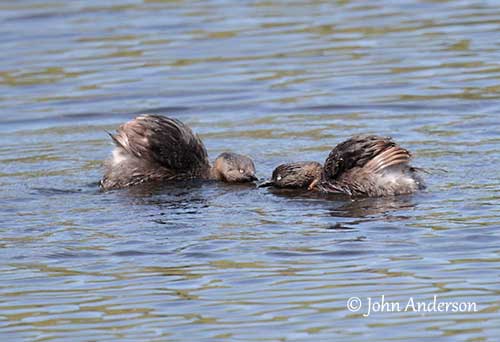
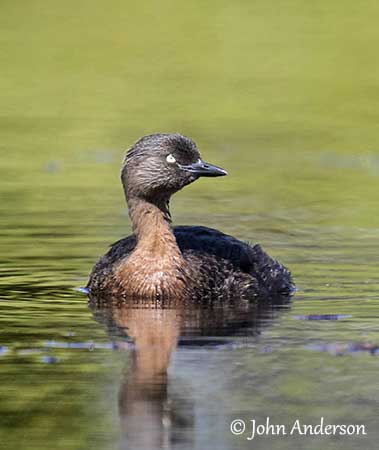
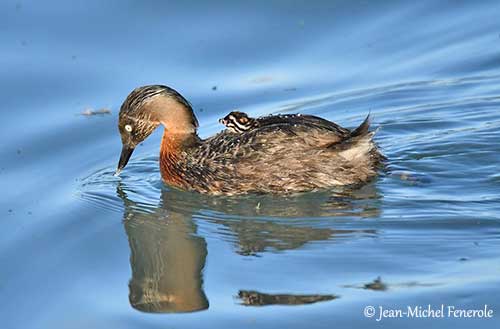
The New Zealand Grebe is sedentary, although it may perform some local dispersion, usually according to food resources.
Post-breeding flocks can be seen in more open lakes and ponds between February and September.
The New Zealand Grebe is rarely seen in flight, but it sometimes migrates from one lake to another at night. It runs a long way over the water in order to take off, while performing rapid wingbeats which are continuous throughout the flight. It flies with neck outstretched forwards and feet trailing behind. Most flights are done by night.
